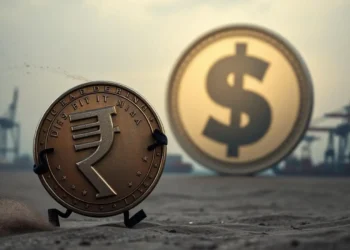Technology has changed the way we live and work since the dawn of the digital revolution. It works to make our lives easier and better all over the world. In this situation, the growth of electronics has also raised a more serious issue of e-waste. Any waste associated with electric and electronic equipment is known as e-waste, and it includes both functional and broken things that are discarded.
E-waste and disposal are serious environmental issues that are affecting the entire world. However, when we buy anything, we don’t think about the materials utilized or where they came from. The same is true for where our retired e-waste goes when it becomes obsolete or is replaced by newer technology. As awareness about climate change is rising, we are witnessing a global movement from a linear to a circular manufacturing paradigm. This is especially essential in electronics recycling, where the circular economy for e-waste has been in the long process of implementation.
Circular Economy For Electronic Waste
A circular economy is characterized as “a model of production and consumption that ensures long-term growth.” With the circular economy, we may promote resource optimization, recover waste by recycling or giving the product a second life as a new one, and reduce raw material consumption. Creating a circular economy for electronic waste will result in zero waste generation and nothing will go into landfills. As a consequence, prolonging the product’s life and reusing components provides even higher economic benefits. There is also the possibility of creating a more circular system in which resources are capitalized on and reused in ways that create a more decent and sustainable environment than they are extracted, used, and discarded.
Importance in India
Our society’s reliance NSE 1.13 % on technology is increasing, as is our electronic waste. Despite the fact that as more items are being purchased, the shelf life will decrease, our e-waste has never been this higher. The electronic waste must be disposed of appropriately; it cannot just be tossed away. Individuals, on the other hand, should also make adjustments to safeguard the environment.
Changes do not occur quickly, but with time, new behaviors and conscious practices about recycling have become increasingly common. At the moment, the world’s most developed countries are attempting the transition from linear to circular economies. India is also taking part in this transition by launching onto a growth path that is restorative and renewing by design.
According to renowned foundation analysis, Adoption of a circular economy in India will result in yearly benefits of $624 billion by 2050 and a 44% reduction in greenhouse gas emissions. Hence, the circular economy plays a pivotal role in preserving the environmental condition and creating a reward system to encourage the recycling of electronic products.
Benefits of Circular Economy
Protection of the environment: By lowering emissions, consuming fewer natural resources, and producing less trash.
Benefits for the local economy: By encouraging production models that rely on the reuse of nearby waste as raw material.
Drives employment growth: It fosters the development of a new, more inventive, and competitive industrial model, resulting in higher economic growth and more employment.
Promotes resource independence: Reusing local resources can reduce reliance on imported raw materials.
Summary
E-waste and its disposal are significant natural challenges that have affected the entire world, yet being environmentally conscientious is becoming the norm.
Everlasting living should not be a simple discipline, yet it is becoming one right now! The first obligation we have as humans is to coexist in the ecosystem without endangering it, such as by implementing a circular economy, which is beneficial to the environment.
As a result, we must do everything in our power, even if it means starting with a little swap, to meet all of our current demands without jeopardizing future generations’ abilities. (Economic Times)














